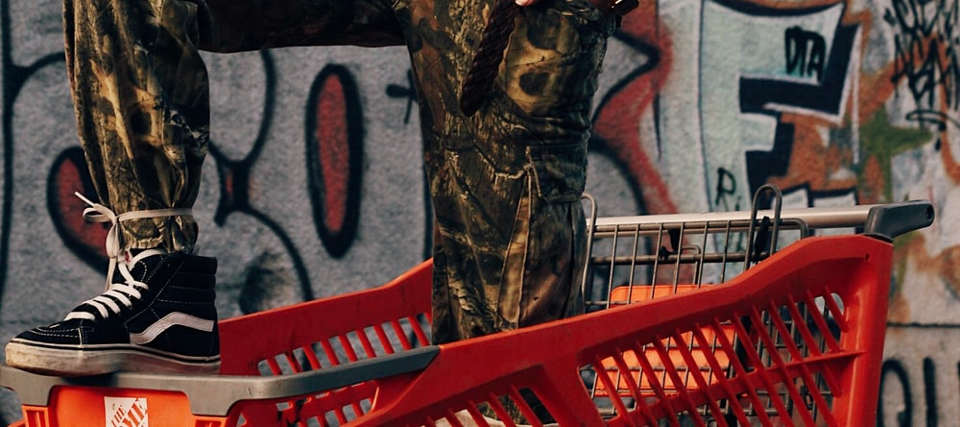Retailers and supplier brands around the world are grappling to understand disrupted paths to purchase, and these co-dependent parties must now seek deeper insights than sales data alone. The power dynamic between retailers and brands can be unbalanced, but Clare Rees, intO’s Communications Lead, predicts that rebuilding the customer’s retail experience will demand close collaboration.
I joined the intO team at the beginning of a year that’s set to be one of the most disruptive and memorable in a generation. It feels good to be part of a team that’s helping organisations by uncovering insights that inspire confident decisions and strategies (find details of our new Impact Assessment Research Programme, here), and I have a huge amount of admiration for anyone trying to steer a business through this unfamiliar terrain. But my background in consumer retail means I have swathes of empathy, in particular, for supplier brands trading with retailers.
The Instability following the UK referendum was bad enough
Here in the UK, we thought 2016 was bad enough. At the time of the Brexit referendum, I was managing the UK distribution of an American fragrance brand into some of the UK’s largest retailers. I experienced the aftershock, and the fluctuating exchange rate, first-hand. Many supplier brands, including my own, that imported or relied on overseas manufacture or components, suffered an unsustainable reduction in margin. Retailers were largely sympathetic, but unable (or unwilling) to share the brunt of the impact and for many brands not owned by a multi-national with a vast brand portfolio (and the leverage with retail buying teams this affords), the traditional retail model became unfeasible. Bad news for them, but great news for the neighbouring brands able to extend ranges and launch NPD into the empty spaces left in their wake, and for outside brands that were swiftly ushered in to fill the gaps on shelves in both physical stores and ecommerce warehouses.
Expect similar ranging movement in the coming year
Few supplier brands are irreplaceable. Established and emerging competitors will be waiting in the wings to capitalise on the inevitable displacements. The smart ones will be gathering insight now that will unveil untapped market opportunity; justify expansion into new markets, retail channels and retail businesses; and support their sales teams’ pitches and proposals to buyers.
Brands with existing retail relationships can’t afford to rest on their laurels and should seek insight that will enable them to fight their corner and retain listings. This could be particularly crucial if retailers remain inclined towards a minimal viable range. Here in the UK, for example, stockpile purchasing led to products like one-pint milk cartons disappearing from shelves, and markets around the world will have observed similar trends that retailers could be reticent to reverse quickly; larger volumes of fewer SKUs deliver more efficient business for retailers. While brand variety has traditionally existed to lure brand-loyal customers and drive competitive negotiations between the retailer and a category’s competing brands, the priorities of both the retailer and consumer have changed and will continue to shift.
Consumer purchase motivations have changed
Economic disruption, like the threat of an imminent recession, is hard enough for retailers, supplier brands and consumers to weather – but this time it’s been delivered by a global pandemic to boot. Consumers will have developed new purchase motivations and priorities that are less driven by price (surrounding hygiene and health, for example) but within a climate of economic uncertainty, many will be managing with tighter budgets overall. In short, what, when and why people buy has changed – and will continue to keep changing.
Retailers and supplier brands will have to put aside power battles & work together
The insight needed to compete in the new environment has to deliver more than retail sales data alone. Every layer in the life of a consumer has been affected: identity, body & health, home & family, community, mobility, work and society at large. Purchase motivations need to be understood in the current context. Even brands that are feeling confident about the future will need to reassess everything they knew about their consumer journey. The causation of some elements of change might be temporary (for example, increased online purchasing because physical stores were shut), but many new habits that have been entrenched will prove irrevocable. And for brands that supply retailers, a huge portion of the customer journey is largely out of their control. Innovation for these brands must involve retail stakeholders. The power dynamic between retailers and supplier brands is often unbalanced and tipped in the retailer’s favour, but forging good experiences for their mutual customers will now depend on understanding each other, and working together, like never before.
The consumer path to purchase differs from product-to-product and brand-to-brand and is increasingly complex and non-linear. However, four stages of the journey will exist in every case for both offline and online transactions: awareness, consideration, conversion and evaluation. In recent weeks at intO, we’ve been mapping out many of the contextual disruptions and adaptations that we’re observing now and predicting for the future. Just a small selection of the questions we’re asking includes…
Awareness: will retailers have to revise the pay-to-play promotion model?
As footfall through physical stores reduces (because of a combination of reasons including hygiene concerns, less commuting and activity outside the home, and the increased adoption of online shopping), what will be the implication for supplier brands who have traditionally relied on shelf presence and promotions in physical stores to drive consumer awareness and unplanned purchases? Ecommerce is still far from being an online-only affair and both online and offline channels work together to trigger awareness and demand across many product categories. Will supplier brands have to innovate marketing activity in channels external to the retail environment to support sales in their key retail accounts? Will retailers be forced to adapt the ‘pay to play’ model as the return on brand investment in promotions shrinks? And how might brands be empowered to take the lead in these discussions with consumer insight that rationalises new models of promotion that go beyond the familiar BOGOF (buy one, get one free), price cuts and 3-for-2s?
Consideration: how will retailers and brands modify their sales environments?
There will be reticence towards, and regulation governing, the handling of products in physical retail stores. How will brands that have traditionally relied on being touched, smelled or tried innovate? How will retailers need to modify store environments to facilitate safe handling and satisfy shoppers? In London, Selfridges has reopened some of its changing rooms – with staff on hand to sanitise surfaces and steam-clean items that have been tried on (The Guardian, 10 June 2020). Items that can’t be steamed will be quarantined for three days. But processes like this are only possible when the price points are premium. Beauty has traditionally been a product area that lured much-needed footfall to the high street, with 50% of shoppers preferring to shop beauty in physical stores due to the availability of testers and the tactile nature of the category’s high-priced, non-returnable items. Brand concessions that encourage hands-on experimentation and theatre have become more commonplace in recent years and many department stores have moved beauty floors to more prominent, accessible locations. Microbial contamination has always been a risk with communal make-up testers, but some believe that coronavirus could signal the end of testers altogether. The packaging costs associated with producing hygienic, single-use samples are generally prohibitive, and both brands and consumers will feel a tension between the desire to sample and the duty to reduce packaging and act with environmental responsibility. Retailers need to understand and respond to the new expectations of their beauty shoppers and support brands in trying to meet them. Global brands, in particular, may be tempted to invest more heavily in their own digital channels, with AR ‘try on’ technology being a tool recently launched by MAC Cosmetics. But brands that have historically relied less on digital channels will have to sprint hard to develop, test and launch solutions that mirror what their customers will miss most from the in-store experience, and take technological variables across their different markets into account.
Conversion: will a new ‘convenience’ dictate priority retail channels and accounts?
How will the threats introduced by coronavirus change the shopping experience, and how will this influence how consumers decide where to buy, and when? In a recent article, intO’s Jonny Jiang asked whether service design might help the retail and hospitality sectors to overcome – or even capitalise – on the ‘waiting times’ that social distancing is imposing on the customer experience. The convenience of superstores and malls with associated car parks once enticed shoppers, in many markets around the world, away from the traditional high street. Similarly, those retailers and retail channels that can facilitate easy, spontaneous access may become the new ‘convenient’. There’s a real tension between the need to restrict customer numbers to safe levels and the fact that, in many societies, consumers are used to immediacy. Supplier brands may find they have new priority retail accounts and channels. And this is even more likely when you consider that less commuting and travel will contribute to the growth of the ‘shop local’ trend in many towns and cities. Brands may need to better understand how they can innovate supply chains and logistics to meet the needs of local newsagents and independent stores, for example, to retain and gain customer loyalty.
With so many dynamics at play, the retail sector and the brands that trade within it will have to invest to understand the granular reality of consumer life. As lockdowns ease around the world, and households reassess their behaviours in and out of the home, contextual insight will be needed to establish those shifts that are here to stay, understand how they’re likely to continue evolving, and inform responses to them. To create the best outcomes for the consumer, co-dependent retailers and brands will have to work more collaboratively than ever to create solutions for their mutual customers. However, in this fiercely competitive and often ruthless industry, they will also need to work individually to protect their own interests and bolster their positions in relation to each other.
 Clare Rees is intO’s Communications Lead. With a long career in public relations behind her, Clare has particular experience in the retail and beauty sectors, and has also launched, distributed and managed global beauty and fragrance brands into supermarket and health & beauty retail channels here in the UK.
Clare Rees is intO’s Communications Lead. With a long career in public relations behind her, Clare has particular experience in the retail and beauty sectors, and has also launched, distributed and managed global beauty and fragrance brands into supermarket and health & beauty retail channels here in the UK.
Lead photo by Robert Andall on Unsplash
Brand Retail Strategy Business Publications Research


 Clare Rees is intO’s Communications Lead. With a long career in public relations behind her, Clare has particular experience in the retail and beauty sectors, and has also launched, distributed and managed global beauty and fragrance brands into supermarket and health & beauty retail channels here in the UK.
Clare Rees is intO’s Communications Lead. With a long career in public relations behind her, Clare has particular experience in the retail and beauty sectors, and has also launched, distributed and managed global beauty and fragrance brands into supermarket and health & beauty retail channels here in the UK.
